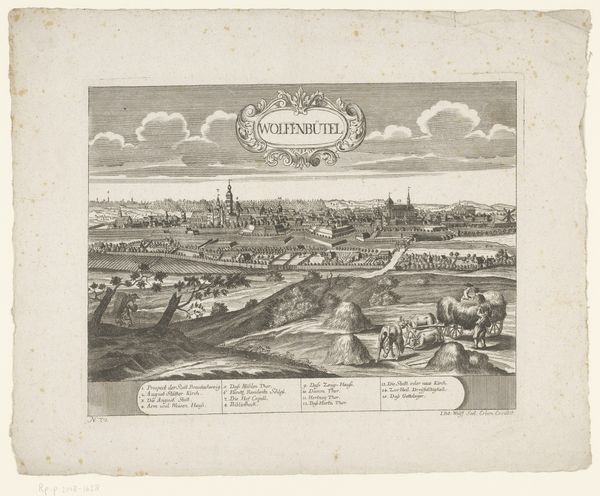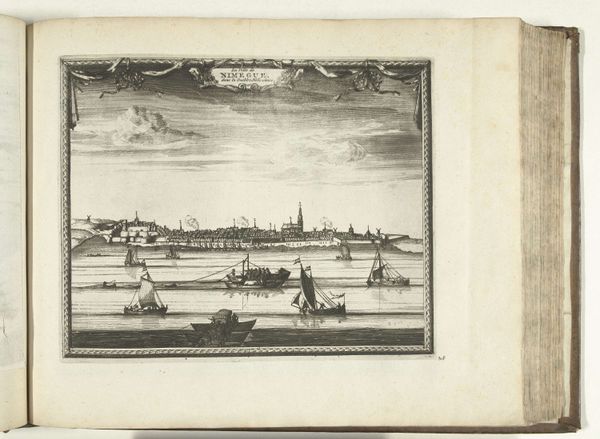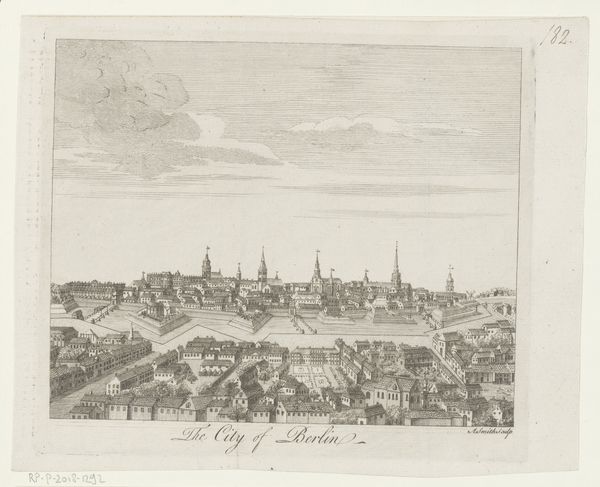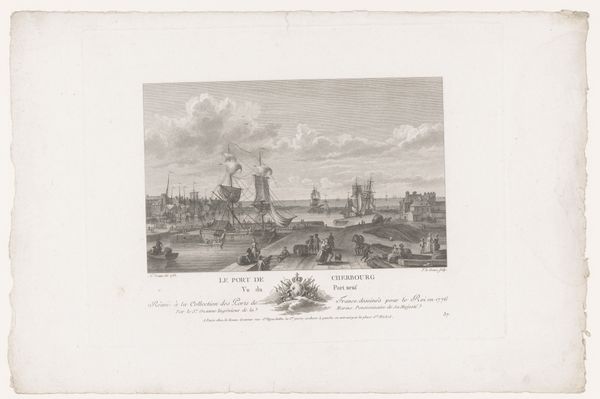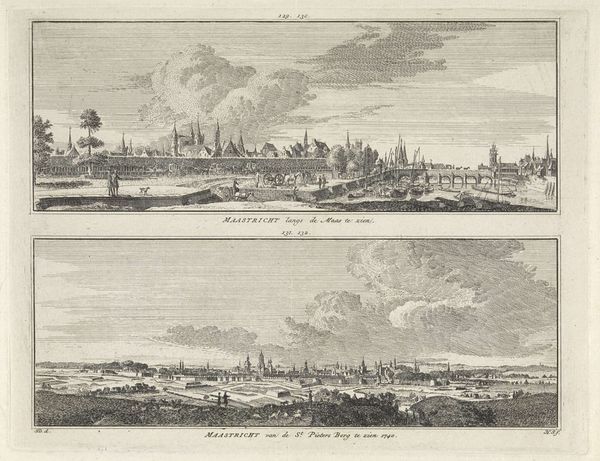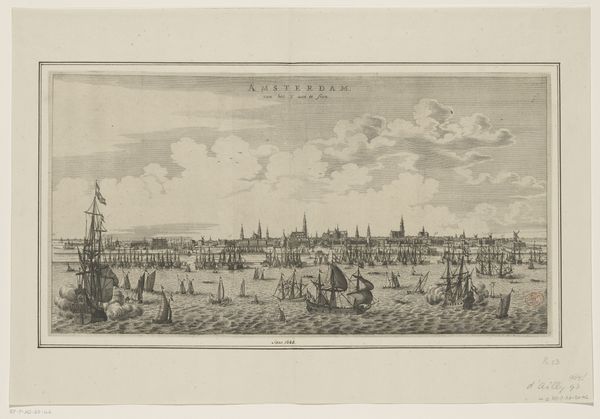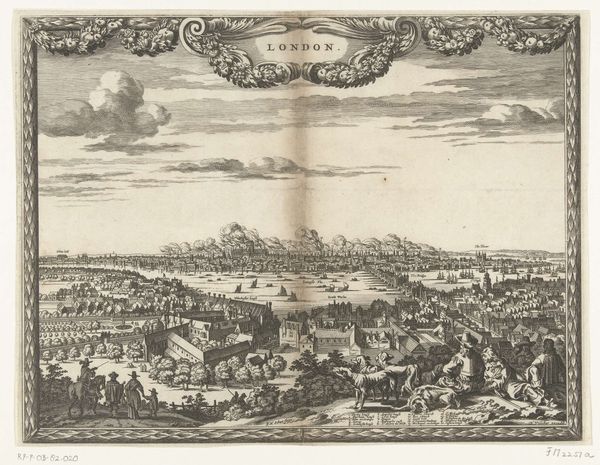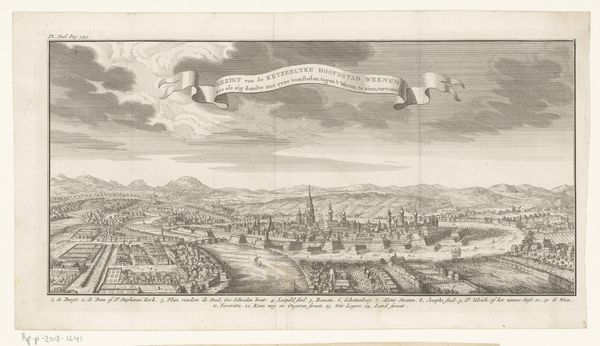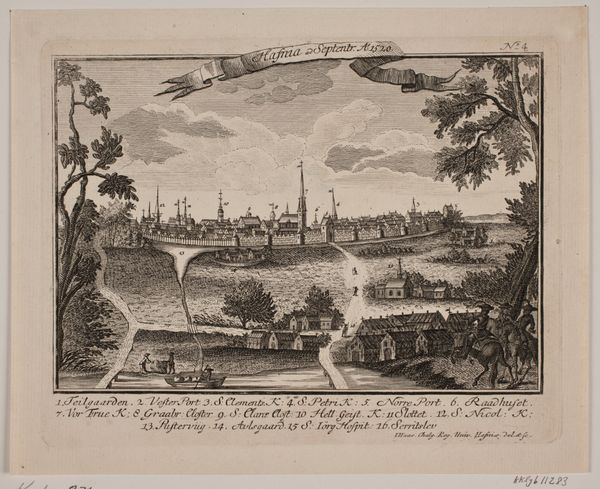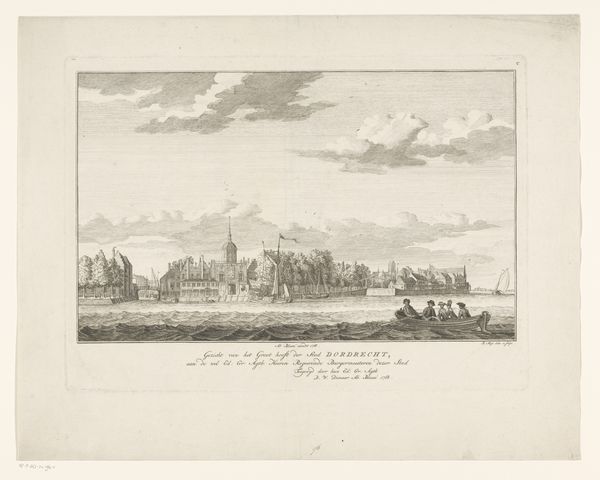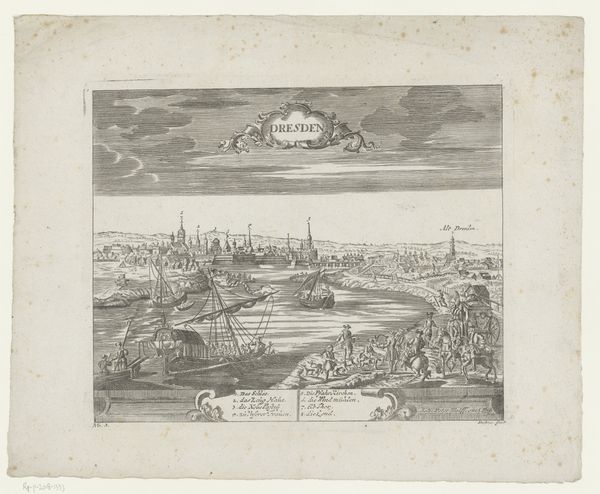
Dimensions: height 223 mm, width 360 mm
Copyright: Rijks Museum: Open Domain
Editor: So, this is "View of the City of Goa," a print made in 1784. I find the intricate lines and varied textures create a mesmerizing panoramic view. How would you approach interpreting this piece? Curator: It's essential to first note how the formal elements—line, shape, and texture—construct this image. Consider the artist's decision to use engraving; the fineness of the lines enables detailed architectural renderings. Editor: That’s interesting. I noticed the contrast between the detailed city and the smoother sky, but hadn’t considered how the medium contributes to that effect. Curator: Precisely. The interplay between these carefully controlled lines and the overall composition structures our viewing experience. The varying densities create an atmospheric perspective, giving the image depth. Have you also noticed the balance between the horizontal and vertical elements, stabilizing the vista? Editor: Yes, the tower definitely anchors the composition vertically. Are there other details in this image’s composition worth calling out? Curator: Note the framing achieved through darker lines on the buildings against the washed-out horizon, giving the composition structure. I must wonder about the choice of perspective—it suggests the intent was to showcase the city's organized layout and fortifications. Do you find any tension created by this ordered layout and the subtle indications of natural forms around it? Editor: I think that gives the piece its appeal—like civilization meeting untouched landscape. Thinking about it formally helped me appreciate how all those visual elements come together. Curator: Indeed. It is by understanding the language of form and medium that we unlock the significance embedded in even seemingly straightforward depictions.
Comments
No comments
Be the first to comment and join the conversation on the ultimate creative platform.
